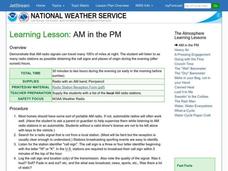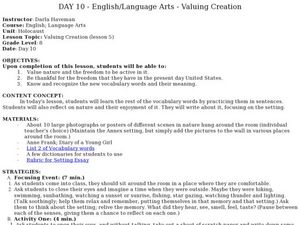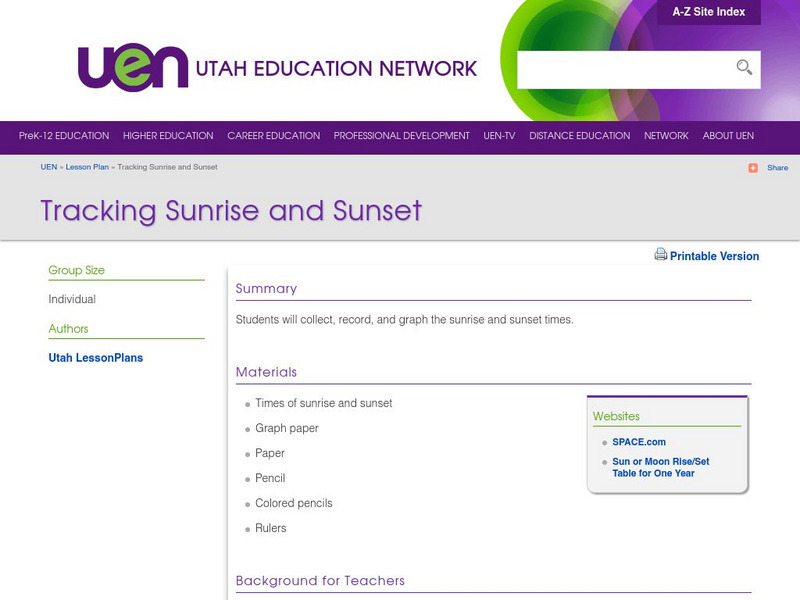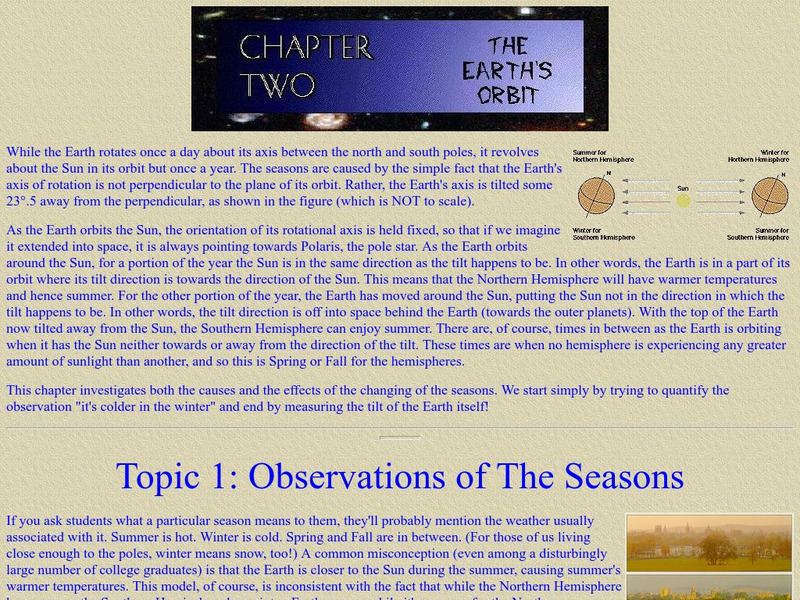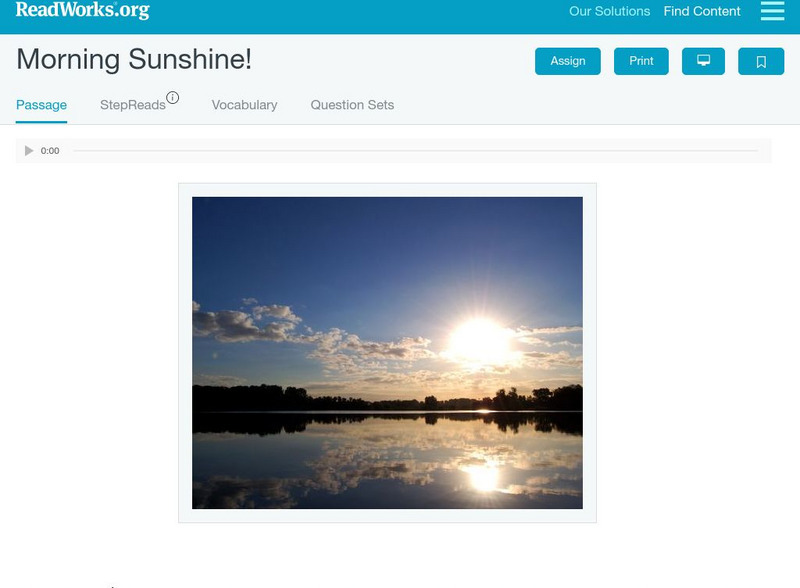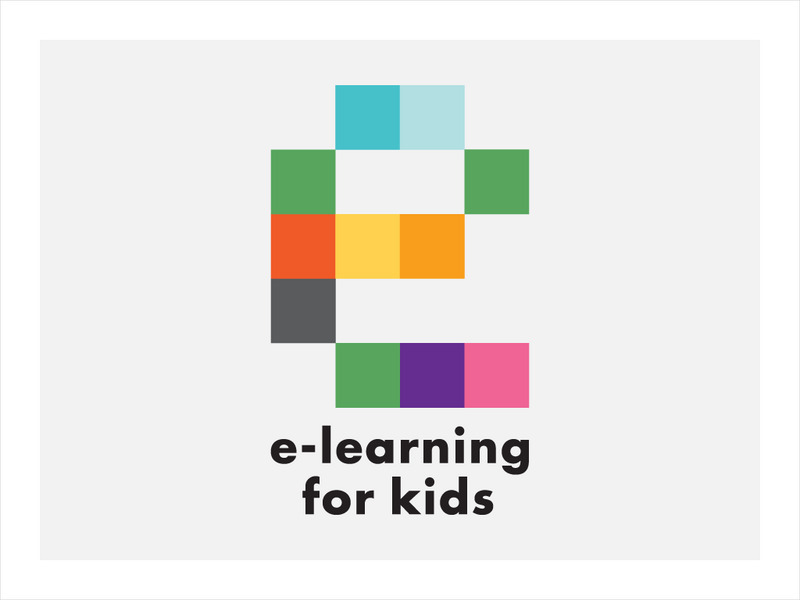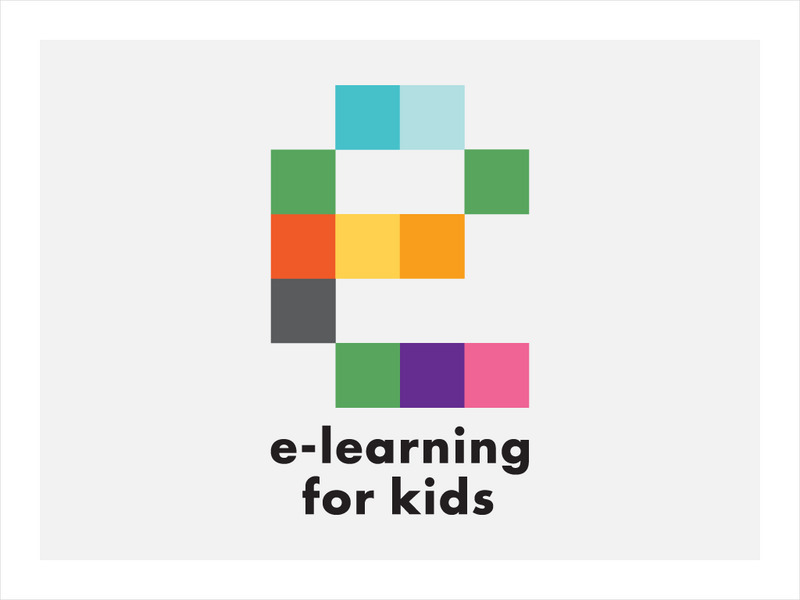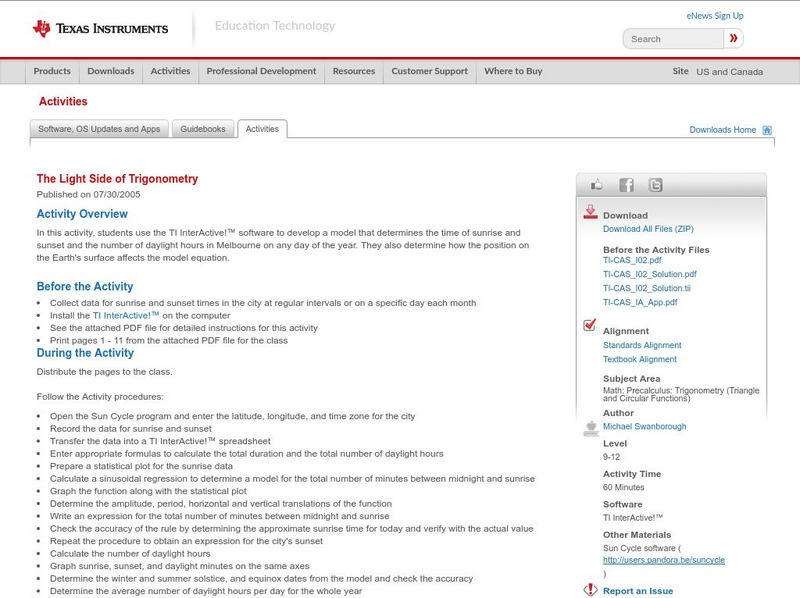Curated OER
Tell Time With Your Feet
Students discover what the latitude and longitude of their location is. They start walking and measure their shadow. They fill in a chart to discover the approximate time.
Curated OER
Learning Lesson: AM in the PM
Learners discover how AM radio signals can travel at night. They listen for a radio station not in their immediate area and log the call sign and the location of the station. They discuss the difference in transmissions during the night...
Curated OER
Keypals and You
Students collect and compare data received from keypals. They use electronic mail to exchange information with keypals and rrite a paper comparing similarities and differences between themselves and their keypals. In addition, use a...
Curated OER
The Holocaust: Valuing Creation
Students write a descriptive essay. In this Holocaust lesson, students discuss what it must have been like for Anne Frank to stay inside for two years. Students try to appeal to all five senses in their descriptions.
Curated OER
Air Quality Presentation for Youth
Students read two books about wind and dust and then participate in a demonstration in which they plant seeds and compare dry, dusty soils to moist soils. They identify the rationale and methods for keeping airborne dust down.
Read Works
Read Works: Sunrise, Sunset, or Not?
[Free Registration/Login Required] An informational text about what causes the sunrise and sunset. A question sheet is available to help students build skills in reading comprehension.
Beacon Learning Center
Beacon Learning Center: Sunrise Sunset
Reading a story about a trip taken by a girl and her dad, this interactive resource teaches kids about the motion of the sun during the day. Occasional questions probe their understanding of this process. They are asked to predict where...
Read Works
Read Works: Sunrise, Sunset
[Free Registration/Login Required] An informational about days being longer in the summer and shorter in the winter. A question sheet is available to help students build skills in reading comprehension.
University of Illinois
University of Illinois Urbana Champaign: Ww2010: Sunset Colors
This site examines the optics of the atmosphere and explains why we see different colored sunsets.
PBS
Pbs Learning Media: Sunrise or Sunset?
What difference does a sunrise or sunset make in your mood and which one do you prefer?
Texas Instruments
Texas Instruments: Sunrise, Sunset: Weather Match
Students determine the relationship between temperature and light intensity. They use a Temperature Sensor and a Light Intensity Sensor to collect temperature and light intensity data for a period of 24 hours. They understand the effect...
Alabama Learning Exchange
Alex: Sun, Earth, and Moon: Calendar of Events
During this lesson students are going to take a look at moon phases and sunrise-sunset times in order to learn about daylight hours. Students discover that we do not always have the same amount of daylight each day. This lesson is best...
Science Education Resource Center at Carleton College
Serc: Creating Your Own Sunset
Learners observe a physical example of how the sunrises and sunsets show color in the sky.
US Navy
Astronomical Applications Department: Complete Sun and Moon Data for One Day
You can obtain the times of sunrise, sunset, moonrise, moonset, transits of the Sun and Moon, and the beginning and end of civil twilight, along with information on the Moon's phase by specifying the date and location in one of the two...
Utah Education Network
Uen: Tracking Sunrise and Sunset
Young scholars will collect, record, and graph the sunrise and sunset times to see how they change throughout the year.
Harvard University
Eyes on the Sky, Feet on the Ground: The Earth's Orbit
Students perform many inquiry activities related to Earth's orbit. Included are recording daily temperatures, observing the sun's path over several weeks, tracking sunrise and sunset times, and angle of sunlight. Diagrams make lessons...
Read Works
Read Works: Morning Sunshine
[Free Registration/Login Required] Students read about how the tilt of the Earth on its axis affects sunrises and sunstes. A question sheet is available to help students build skills in reading comprehension.
E-learning for Kids
E Learning for Kids: Science: Center of the Ocean: The Sun, the Earth, and the Moon
Nita lives on Coco Island in the Indian Ocean, and is learning more about the Sun, the Earth, and the Moon. Join her and learn about day and night.
E-learning for Kids
E Learning for Kids: Science: Egypt: Why Does the Sun Appear to Move Across the Sky?
Join Imhotep in his journey to figure out where the sun goes at night.
E-learning for Kids
E Learning for Kids: Science: France: What Makes Day and Night?
Papa and his son Pierre work at a grape farm. Pierre loves to go out and play as soon as the sun comes up. What do you know about the sun and the Earth?
NOAA
Noaa: Solar Calculators
This resource allows users to find sunset/sunrise calculations based on latitude and longitude for various locations. Provides a glossary of related terms and an explanation of their calculations.
Texas Instruments
Texas Instruments: Light and Day
In this activity, students will collect temperature and light readings over a 25 hour time period and explore relationships between and within the data. They will discover the relationships of temperature with sunrise and sunset and look...
Texas Instruments
Texas Instruments: The Light Side of Trigonometry
In this activity, students use the TI InterActive! software to develop a model that determines the time of sunrise and sunset and the number of daylight hours in Melbourne on any day of the year. They also determine how the position on...
TeachEngineering
Teach Engineering: Portable Sundial
In this activity students will investigate the accuracy of sundials and the discrepancy that lies between "real time" and "clock time". They will track the position of the sun over the course of a relatively short period of time as they...

